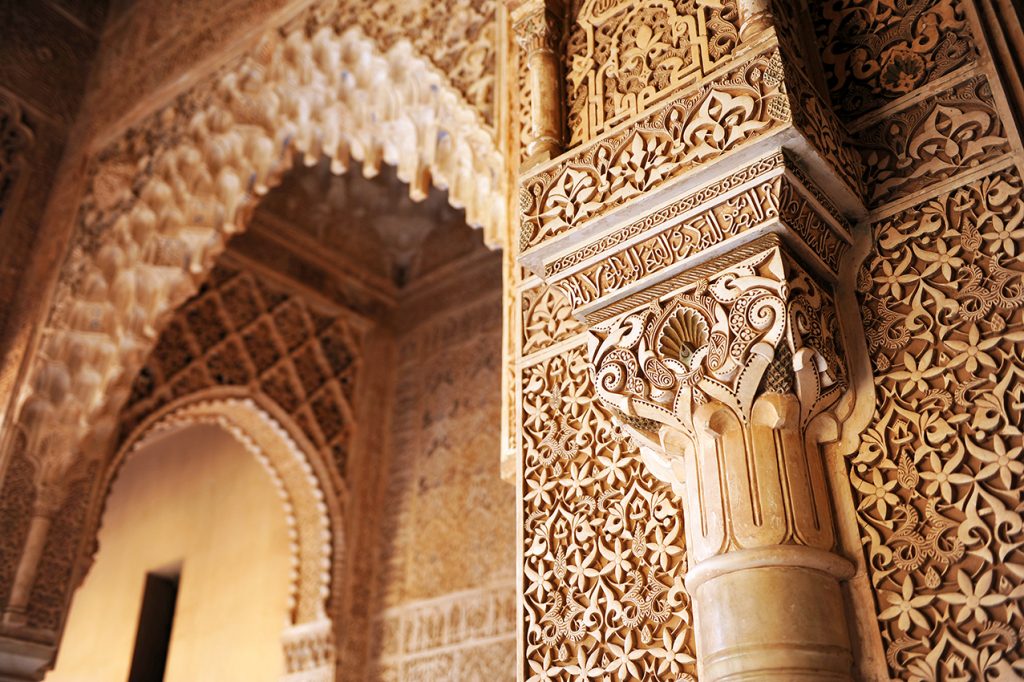Spain is a country steeped in cultural and historical heritage, and this is especially true of the period when it was ruled by the Moors. From 711 to 1492, Muslim rule dominated much of Spain, leaving behind a lasting legacy that continues to shape the country today. This guide will take you through some of the most captivating highlights of Muslim Spain.
The Alhambra in Granada is one of the most renowned and well-preserved examples of Muslim architecture in Spain. This grand palace and fortress complex was built during the reign of the Nasrid dynasty and features intricate tilework, stunning gardens, and impressive architectural details. A visit to the Alhambra offers a glimpse into the lavish lifestyle of Spain’s former Muslim rulers and is a must-see destination for any history or architecture buff.
The Mezquita in Cordoba is another example of the stunning architectural heritage of Muslim Spain. This mosque-cathedral is a unique fusion of styles, with a beautiful forest of columns and arches that once served as a mosque and later became a Catholic cathedral. Visitors can admire the intricate details of the mosque’s design, including its colorful mosaics, and experience the rich history of this fascinating building. The Mezquita stands as a testament to the religious and cultural diversity of Spain, showcasing the coexistence of different cultures and beliefs.
For those interested in Islamic art and culture, the living Museum of Al-Andalus in Cordoba is a must-visit. This museum features an impressive collection of artifacts from the period of Muslim rule in Spain, including pottery, textiles, and jewelry. Visitors can gain a deeper understanding of the artistic traditions of Muslim Spain and appreciate the intricate beauty of these unique artifacts. The museum serves as a window into the cultural richness of the past, offering a glimpse into the daily life and beliefs of the Muslim community in Spain.
The Royal Alcazar of Seville is another example of the impressive architecture of Muslim Spain. This palace was originally built in the 10th century and was one of the largest in the world during the time of Muslim rule. Today, it is a museum that offers visitors a glimpse into the cultural and religious life of Spain’s former Muslim rulers. The palace’s ornate details and impressive size make it a must-see destination for anyone interested in the history of Spain. Visitors can admire the stunning architecture and intricate details of the palace, as well as learn about the cultural and religious practices of the Muslim community.
For those who love nature, a visit to the Alpujarras is a must. This beautiful region is located in the southern Sierra Nevada mountains and was once home to a thriving Muslim community. Today, the area is known for its stunning scenery and traditional architecture, including the white-washed villages and terraced farmlands that make it such a unique and beautiful destination. The Alpujarras offers a chance to escape the hustle and bustle of city life and immerse oneself in the natural beauty of the region. Visitors can explore the traditional villages, hike the mountains, and experience the tranquil pace of life in this picturesque region.
In conclusion, exploring the rich legacy of Muslim Spain is an unforgettable experience that offers visitors a glimpse into a fascinating period in the country’s history. From the beautiful palaces and mosques to the stunning natural beauty of the Alpujarras, there is something for everyone when discovering the lasting impact of Muslim Spain. Whether you’re a history buff, nature lover, or simply seeking a cultural adventure, this guide will lead you on a journey through the rich heritage of this captivating country.


